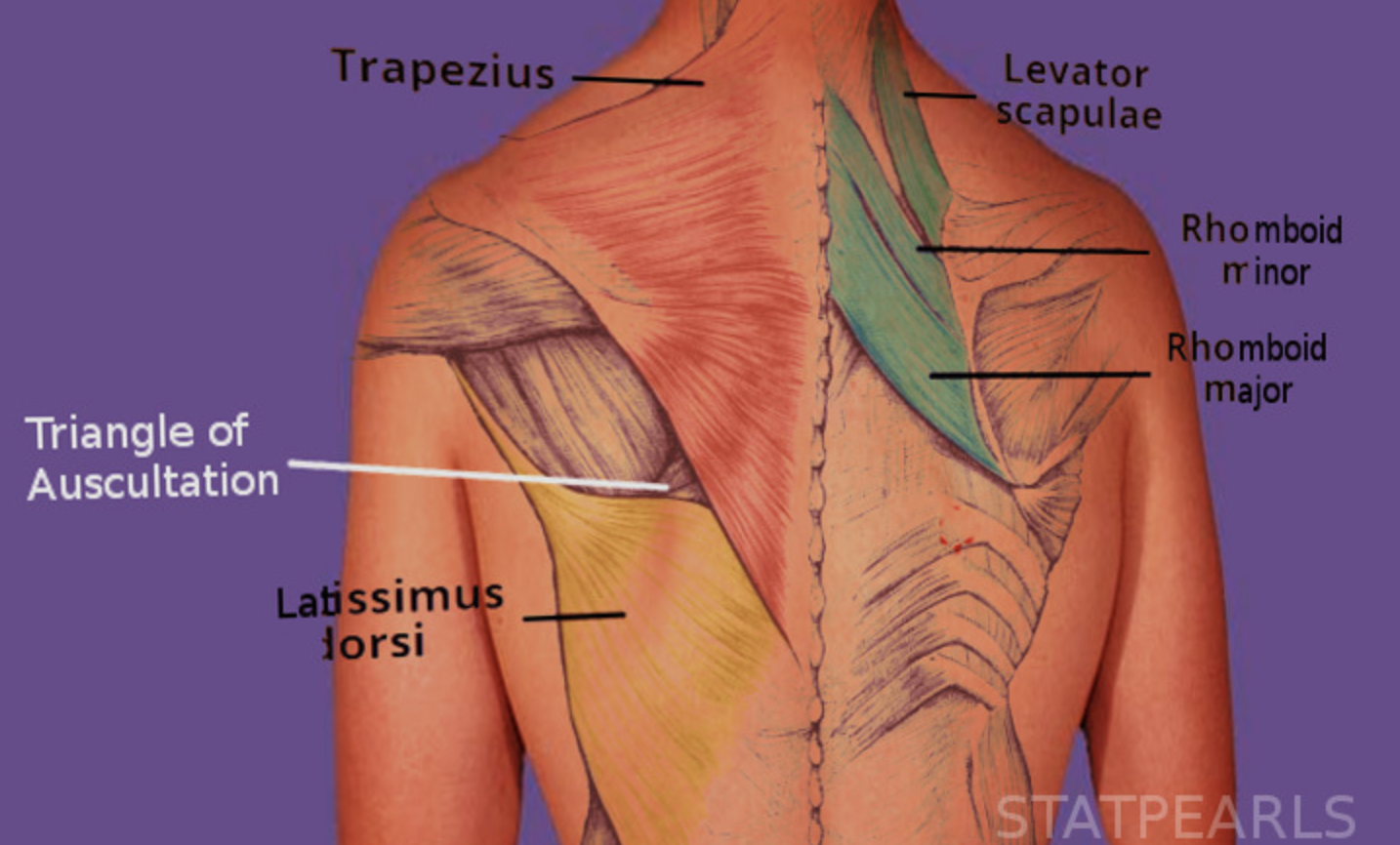When you’re listening to a patient’s lungs, finding the clearest spot on the back can mean the difference between catching a subtle crackle or missing it altogether. That’s where the Triangle of Auscultation comes in, a natural “window” through which lung sounds can be heard with exceptional clarity. Let’s dive into its anatomy, clinical importance, and practical tips for making the most of this handy landmark.
What Is the Triangle of Auscultation?
The triangle of auscultation is a small, triangular area on the posterolateral thoracic wall where soft tissue is thinnest, allowing a stethoscope to pick up lung sounds with minimal interference.
It’s bounded by:
- Medial border: Lower edge of the trapezius muscle
- Lateral border: Medial edge of the scapula
- Inferior border: Upper border of the latissimus dorsi muscle
When the patient folds their arms across the chest or leans forward, these muscles shift, widening the triangle and reducing the distance between the skin and the lung.
From: Anatomy, Thorax, Triangle of Auscultation
Why Use the Triangle?
- Enhanced Sound Transmission: With fewer muscle fibers and thinner tissue, adventitious sounds, such as wheezes, crackles, or bronchial breath sounds, are amplified and clearer.
- Efficient Examination: Rather than probing multiple points, auscultation here often reveals abnormalities in the lower lobes of the lungs with a single placement of the stethoscope.
- Comfort for the Patient: Patients can sit upright, fold their arms, and lean forward slightly, a position that is generally well tolerated, even in those with limited mobility.
How to Locate and Auscultate
- Position the Patient: Have the patient sit and cross their arms in front of their chest or reach their hands behind their neck.
- Identify the Borders:
- Ask the patient to relax their shoulders, and observe the prominent trapezius running down from the neck.
- Feel for the medial border of the scapula when their arms are folded.
- Trace the upper edge of the latissimus dorsi near the lower ribs.
- Place Your Stethoscope: Center the diaphragm (or bell, if you prefer) of your stethoscope within the triangle. Encourage the patient to take deep breaths in and out through an open mouth.
- Listen Carefully: Focus on any changes in pitch, duration, or quality of breath sounds. Compare with the opposite side for asymmetries.
Choosing the Right Stethoscope
Even within the Triangle of Auscultation, a quality stethoscope can make a big difference. Features to consider include:
- Tunable Diaphragm: Allows you to hear both high- and low-frequency sounds by adjusting pressure, available in the Littmann Classic III stethoscope.
- Lightweight Design: Can enhance comfort during prolonged exams, like the ADC 612 Lite Platinum Stethoscope.
- Noise Reduction: Digital models like the Littmann Core Digital stethoscopes have ambient-noise cancellation can further clarify subtle findings.
For a curated selection of professional-grade instruments, visit our stethoscope collection and discover models designed for precision and comfort.
Key Takeaways
The Triangle of Auscultation may be small, but its impact on your respiratory exam can be huge. By mastering its anatomic borders and choosing the right stethoscope, you’ll be well-equipped to catch even the subtlest lung sounds. Ready to upgrade your exam technique? Explore our full range of high-performance stethoscopes today.


